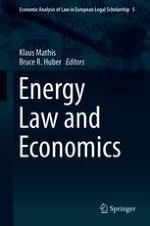2018 | OriginalPaper | Buchkapitel
The Interplay Between Liberalization and Decarbonization in the European Internal Energy Market for Electricity
verfasst von : Anna-Alexandra Marhold
Erschienen in: Energy Law and Economics
Aktivieren Sie unsere intelligente Suche, um passende Fachinhalte oder Patente zu finden.
Wählen Sie Textabschnitte aus um mit Künstlicher Intelligenz passenden Patente zu finden. powered by
Markieren Sie Textabschnitte, um KI-gestützt weitere passende Inhalte zu finden. powered by
